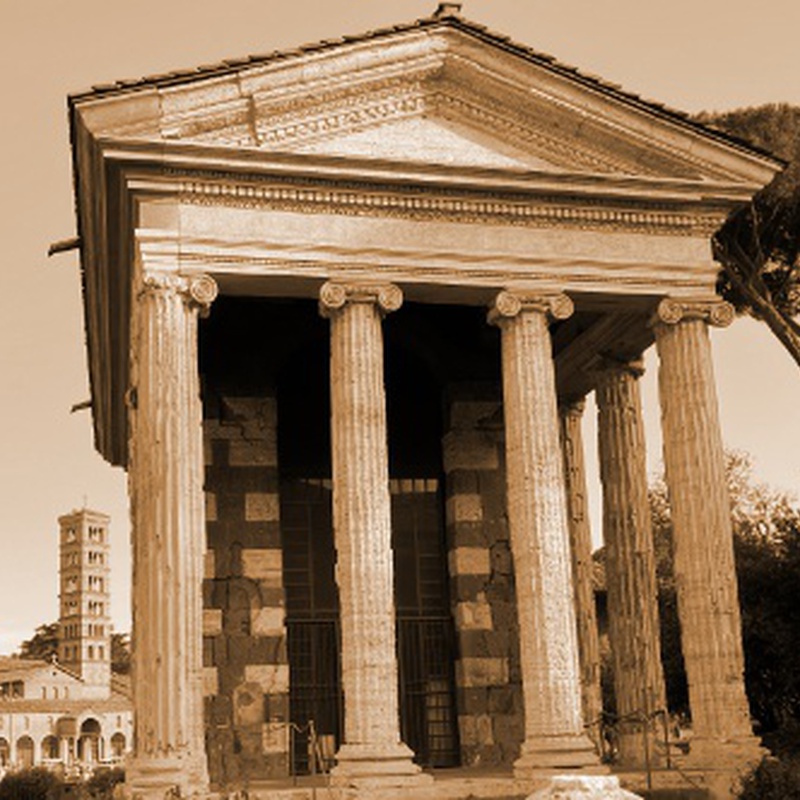Posted by Roberto D'Autilia on 09 Jul 2022
Temple of Portunus
Late Republic period, Rome
Religious site / Temple
The Temple of Portunus, or Tempio di Portuno in Italian, also known as the Temple of Fortuna Virilis ('manly fortune'), stands as a testament to the grandeur of ancient Rome. Its precise dedication is shrouded in mystery due to conflicting historical accounts regarding the temples in this region of Rome. The name 'Fortuna Virilis' became popular during the Renaissance, though if indeed dedicated to Portunus - the god of keys, doors, livestock, and granaries - it would have been a central place of worship for the deity in the city. Located by the ancient Forum Boarium near the Tiber, the temple once had a prime view of the Port Tiberinus. It is here that Portunus would have overseen the cattle barges entering Rome from Ostia. The temple's architecture is a splendid example of the Ionic order. Initially constructed in the third or fourth century BC, it underwent a significant reconstruction between 120 and 80 BC. The design features a tetrastyle portico and cella, elevated on a podium accessible by a series of steps, a feature that remains to this day. The temple's architectural form, known as pseudoperipteral, includes free-standing columns at the front while the sides and rear are lined with engaged half-columns. The Ionic capitals display the original form, with unique frontal and side views, except for the corner volutes that angle out at forty-five degrees, a distinct Roman touch. The structure is primarily made of tuff and travertine, with an outer layer of stucco, now lost. The temple's preservation is largely due to its conversion into a church in 872, when it was rededicated to Santa Maria Egiziaca (Saint Mary of Egypt). Its architectural beauty, particularly the Ionic order, has been widely admired and emulated since the 16th century. An example of its influence is the 18th-century Temple of Harmony in Somerset, England, which is a folly inspired by the Temple of Portunus.
